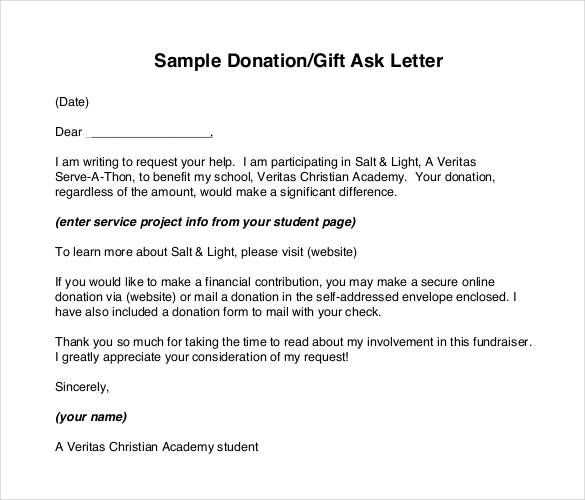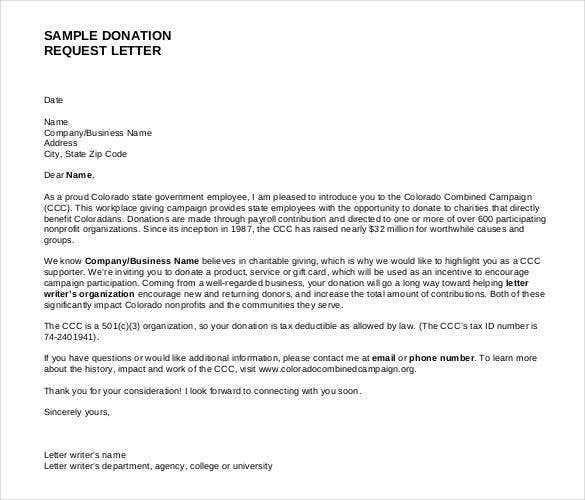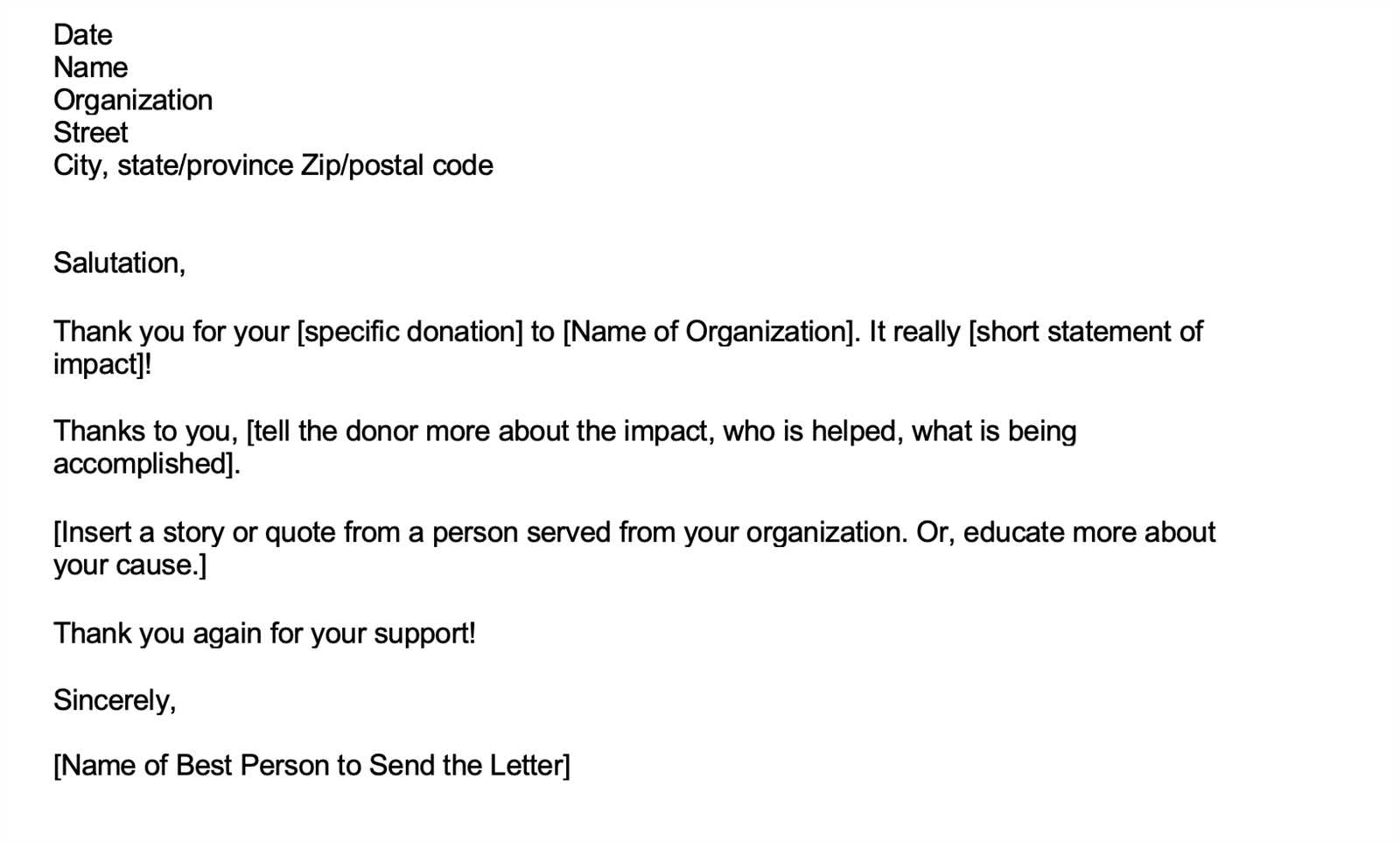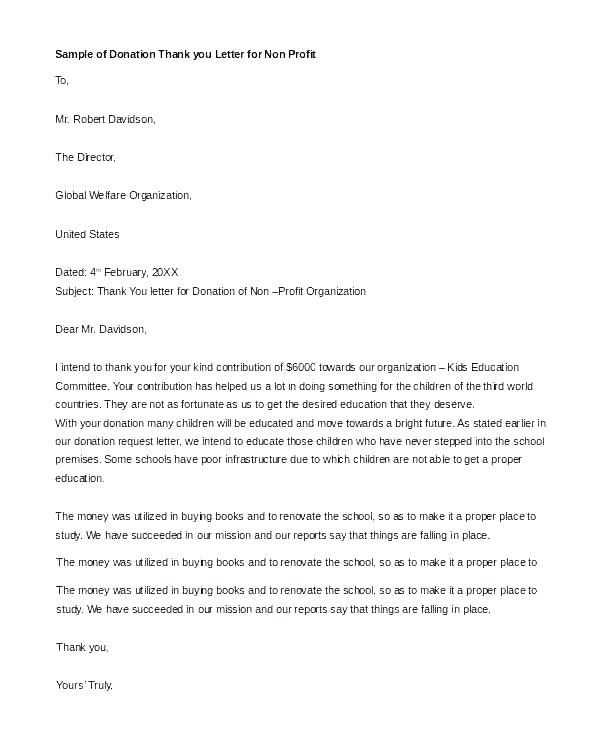Donation letter thank you template

Writing a thank you letter for donations is a simple yet powerful way to show gratitude to those who support your cause. It reinforces the impact of their contribution and strengthens the relationship between your organization and the donor. A well-crafted thank you letter can make all the difference in encouraging future support. Here’s how to write one that resonates.
Begin by addressing the donor personally. Acknowledge their specific donation and explain how it will directly benefit your cause. For example, if the donation is for a particular project or initiative, highlight that project’s significance and how the funds will be used. This makes the donor feel more connected to the impact of their gift.
Next, express genuine appreciation. Be specific in your gratitude–mention the amount donated, if appropriate, and recognize the donor’s role in helping you achieve your goals. The more personal and direct the message, the more meaningful it will feel.
Finish by inviting them to stay engaged with your organization. Whether it’s through regular updates, volunteer opportunities, or invitations to upcoming events, keeping the donor informed and involved ensures they remain connected to your mission. Ending on a positive note will encourage long-term support and continued generosity.
Donation Letter Thank You Template
Begin with a clear expression of gratitude for the donation. Mention the specific contribution and how it will be used to support the cause. This helps the donor feel connected to the impact of their generosity.
- Personalize the message by including the donor’s name and referencing their specific gift. A personalized approach strengthens the relationship.
- Acknowledge the donor’s generosity by recognizing the difference their support makes. It’s important that they feel appreciated.
- Specify the impact of their contribution. Let them know exactly how the donation will be put to use, whether it’s funding a program, purchasing supplies, or supporting a specific initiative.
End the letter by reinforcing your gratitude and expressing hope for future collaboration. Keep the tone warm and genuine to leave a lasting impression.
- Close with thanks: “We are deeply grateful for your generous support.” Avoid generic phrases that could dilute the sentiment.
- Invite further involvement: Encourage continued engagement by mentioning ways the donor can stay connected, such as through newsletters or events.
- Sign off with warmth: Use a friendly and sincere closing, such as “With appreciation,” or “Thank you again.”
Personalizing Your Thank You Message for Each Donor
Tailor your message to each donor by including details that highlight their unique contribution. Start with addressing them by name to make the message feel more personal. Acknowledge the specific amount or item they donated to reinforce the impact of their gift.
Here are key ways to personalize your thank you note:
- Use Their Name: Always use the donor’s full name. If you have a good relationship, a friendly title like “Dear John” can add warmth.
- Reference Their Contribution: Mention the exact donation or support they provided. For example, “Your generous gift of $100 will help us continue our mission.”
- Share the Impact: Explain what their donation will achieve. Donors appreciate knowing how their support is being used. For instance, “Your contribution will allow us to fund scholarships for 10 students this year.”
- Be Specific: If possible, refer to any prior interactions or engagement. A simple, “It was great meeting you at our annual gala,” adds a personal touch.
- Show Gratitude: Express genuine thanks in a way that feels sincere. Avoid generic expressions and instead say something specific like, “We are so grateful for your support and commitment to our cause.”
Every donation, no matter the size, deserves recognition. Personalizing your message shows appreciation and strengthens your relationship with donors.
Choosing the Right Tone for Different Types of Donations

For one-time donations, keep the tone warm and sincere. Acknowledge the donor’s generosity and emphasize the immediate impact their contribution will have. This shows appreciation while reinforcing the significance of their support. Avoid overly formal language; instead, opt for a conversational and personal style that reflects gratitude.
For recurring donations, focus on building a sense of partnership. Express how their ongoing support helps sustain long-term goals and strengthens the mission. Acknowledge their commitment and convey a sense of belonging to a larger cause. Be sure to emphasize the continuing value of their contribution over time.
In the case of corporate donations, adopt a more professional tone. Highlight the positive exposure their support brings to both their company and the cause. Acknowledge their corporate social responsibility and how their involvement enhances their brand’s reputation while making a measurable difference in the community.
For smaller or smaller-scale donations, keep the message humble and personal. Express genuine thanks, focusing on how every contribution, no matter the size, plays a role in achieving goals. Avoid making the donor feel like their gift is less impactful–every amount counts and should be celebrated.
Incorporating Specific Details of the Donor’s Contribution

Address the exact nature of the donation with clarity. Mention the amount donated, or the specific items provided, highlighting their impact. For example, instead of simply saying “your generous donation,” specify “your $500 contribution to our scholarship fund.” This adds a personal touch and makes the donor feel their support is valued.
Include how their contribution will be used. For instance, if their donation supports a specific project, explain that in your letter. “Your donation will provide 20 students with the tools they need to succeed in our after-school program” gives the donor clear insight into how their gift directly impacts the cause.
Personalize the message by acknowledging any connection the donor has with your organization. If they’ve donated before or have a history with your cause, make that known. “This is your third year supporting our mission, and we are grateful for your ongoing commitment to making a difference.” This builds a lasting relationship and reinforces their involvement.
Incorporate any future plans or upcoming initiatives the donor’s contribution will support. If their donation helps fund an event or special project, mention how their generosity plays a part in its success. “Thanks to your donation, we can host our community health fair next month, bringing vital resources to families in need.” This keeps the donor engaged with your organization’s progress and future goals.
Expressing Gratitude and the Impact of the Donation
Thanking a donor begins with acknowledging the real change their contribution makes. Express appreciation with specifics: how their donation helps fulfill a need or advance a project. For example, “Your generous donation has provided the necessary supplies for our community outreach program, impacting the lives of 200 families.” Highlighting these details shows the tangible difference they’ve made.
Creating a Personal Connection

Personalize your message to reflect the donor’s individual choice. Mention how their support aligns with your organization’s mission or goals. For instance, “We are grateful for your support of our literacy programs, which will directly enhance the educational opportunities for young children in our community.” This helps the donor feel directly connected to the work being done.
Long-Term Benefits
Share the lasting effects of their donation, including how their support will continue to make an impact over time. This could include statements like, “Your gift ensures the sustainability of our efforts, allowing us to expand our reach for years to come.” This reinforces the importance of their ongoing partnership and provides a sense of continuity.
Maintaining Professionalism and Clarity in Your Thank You Letter
Use clear and direct language. Start by acknowledging the donation with a personal touch, expressing gratitude for the specific amount or item received. This shows that you recognize the donor’s contribution and value their support. Avoid generalities or vague statements. Instead, mention how the donation will be used and the positive impact it will have. This keeps the tone both appreciative and focused.
Stay concise. While it’s important to convey your thanks, there’s no need to over-explain. Stick to the main point and avoid adding unnecessary details. This keeps the letter streamlined and respectful of the recipient’s time.
Maintain a polite yet professional tone throughout. Avoid overly casual language or slang, as this may detract from the formal nature of the letter. Use proper punctuation and grammar to ensure that your message comes across clearly and professionally.
Finally, end with a call to continued support or engagement, but do so without sounding presumptive. A simple statement like “We look forward to staying connected” encourages further involvement while remaining respectful and considerate.
Following Up and Keeping Donors Engaged
Send a personalized thank-you message within a week of receiving a donation. Tailor your message to reflect the donor’s contribution, and include specific details on how their support makes a difference. This shows you value their commitment and provides immediate recognition.
Engage donors regularly by sharing updates on your projects and the impact of their donations. A simple email with images or a short video can help them feel connected to your mission and proud of their involvement.
Host special events or webinars for donors to provide them with an exclusive look at your work. These can be virtual or in-person gatherings where donors can see firsthand the results of their contributions and interact with the team behind the initiatives.
Invite donors to participate in future campaigns or volunteer opportunities. Keeping them involved in various ways builds a stronger relationship and reinforces their sense of purpose within your cause.
| Engagement Action | Best Timing | Method |
|---|---|---|
| Send Thank-You Letter | Within a week | Personalized Email |
| Provide Project Updates | Quarterly | Email/Newsletter |
| Host Exclusive Event | Annually | Virtual or In-Person |
| Invite to Volunteer | Throughout the Year | Invitation Email |
By keeping donors informed and involved, you’ll create lasting relationships that continue to benefit your cause. Regular communication will remind them of the impact they’ve made and motivate them to stay engaged.